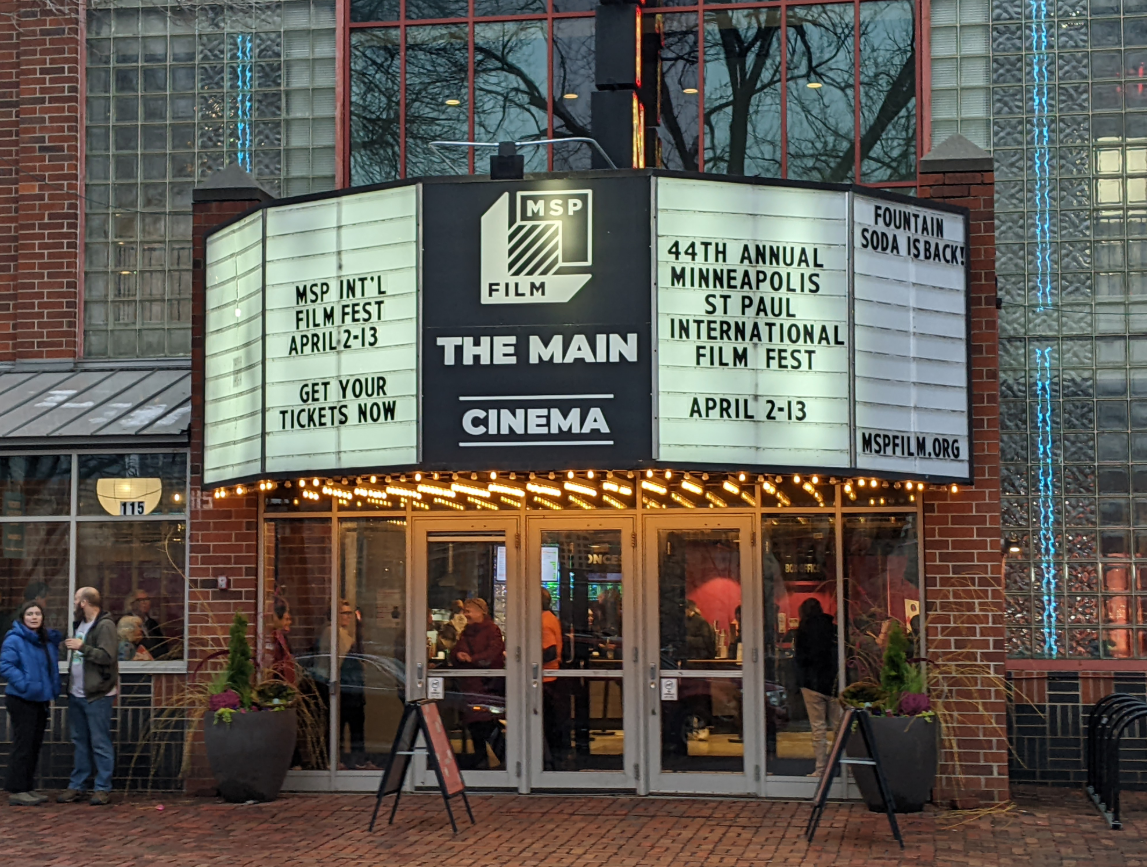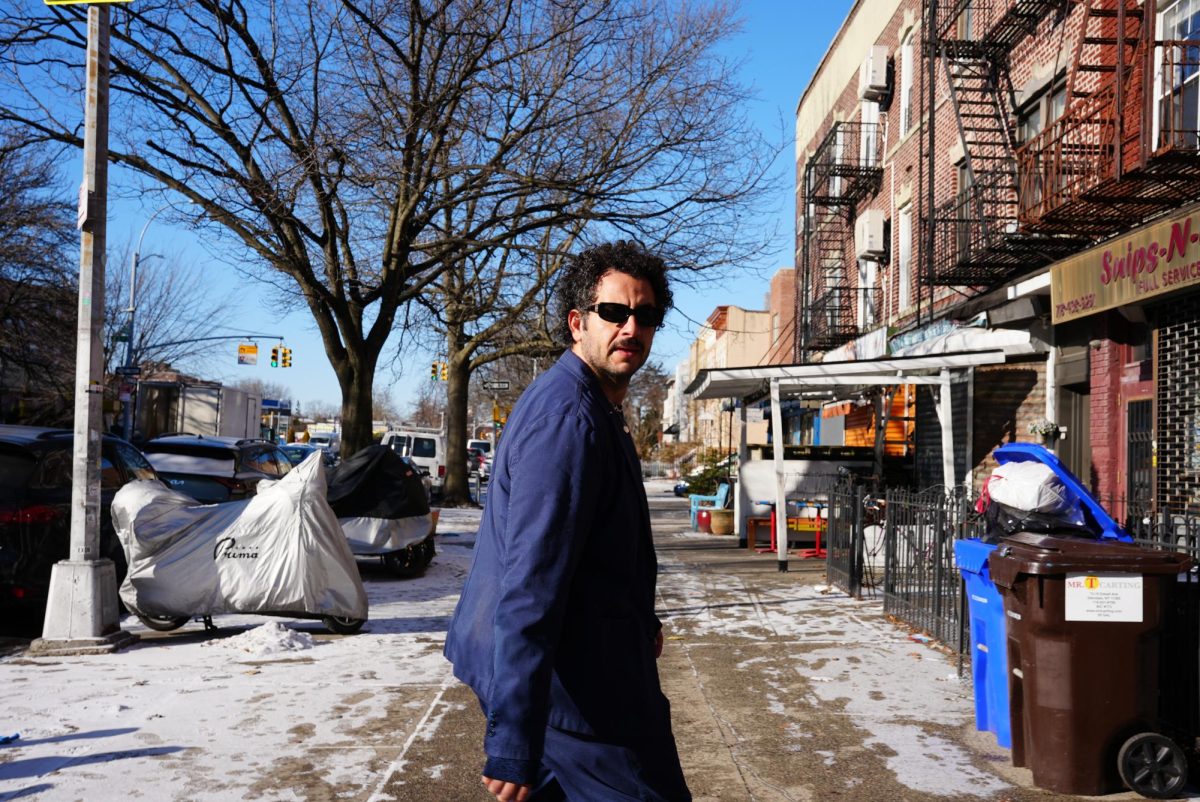The luxurious splendor and dizzying allure of contemporary metropolitan nightlife is hard to resist, especially around the holiday season. Downtown Minneapolis during the holidays, alive with horse drawn carriages, the Holidazzle parade and other festivities, creates a warm ambience amidst a snowy Minnesotan backdrop.
For veteran socialites and surly scene-seekers, it is also the season of red velvet, poinsettia cocktails and public schmoozing under the mistletoe. But alas, this grand ol’ city of ours doesn’t always live up to our expectations. The downtown side of Hennepin Avenue has, in recent years, been a dud. Ironically, Uptown has become a homogenous nook of quasi-scenesterdom. And, for those who are sick of hoochie-mama hootenannies at Escape Ultra Lounge and Spin, or get nauseous at the thought of one more tapas restaurant, the newly opened Chambers Hotel offers an avant-garde alternative.
Twin Cities, meet the Chambers Hotel. Inspired by the Chambers Hotel in New York City, the new “boutique” hotel overlooking the Hennepin Theater District has many a culture vulture gushing over its innovative concept. The hotel hot spot’s variety of atmospheric stimuli is hard to find elsewhere in one package; it is a lounge, hotel, bar, restaurant and art gallery.
Apparently, luxury “boutique” hotels are the new craze on the coasts and in European cultural topographies. Now, the trend is finally sweeping the Twin Cities, with the Chambers reflecting a sort of frenzied ambitious version of private sector catch-up.
The Chambers is more than just a highbrow spectacle for gazing. They serve up wasabi peanuts and popcorn, free of charge, in the lounges. The lobby and lounge areas reek of classic, leisurely sophistication, but dreadlocks, glitter and gray hair all mingle in the public spaces. People aged anywhere from 20 to 60 have been flocking to this new downtown hipster watering hole, causing many to rhapsodize about a possible permanent revitalization of the Hennepin Avenue area. The neighborhood, like the city, might finally be growing into its own as a cultural destination. And the Chambers, many say, might indeed be the much needed catalyst for the job.
However, every fawned-over luscious hot spot comes with its own dose of realistic skepticism. There are some concerns that the hotel’s arrival is contributing to an already invasive downtown gentrification. Others think this is just another attempt to convince snooty jetsetters that Minnesota is made up of more than fiberglass Paul Bunyan statues. Nonetheless, many of the hotel’s elements are aesthetically irresistible and perfect for a nighttime holiday romp.
The hotel conveys a minimalist ethos, but its white ceiling-to-floor getup is far from sanitarium-style starchiness. The aesthetic mojo comes from the splashes of peculiar, bold and striking artwork – more than 230 individual pieces – from hotel owner Ralph Burnet’s private collection.
To the left of the main entrance, a piece by artist Subodh Gupta called “Other Thing” – a giant mass of glistening stainless steel chapatti tongs, used for frying rotis cakes in India – protrudes out from the wall opposite the receptionist’s desk.
The art only gets weirder the deeper into the hotel you venture. Next to the main floor bar is a collage piece of eerie, KY jelly-induced colonial bedroom lore involving an Asian businessman, a three hole Bridget and American porn pinups.
Behind the desk, guests and onlookers come in contact with an object of the most curious grotesquerie by artist Damien Hirst: a decaying cow’s head floating in a clear glass aquarium. Hirst, a leading name in the Young British Artist movement and creator of conceptual pieces that involve formaldehyde, maggots and other deceased products of British animal husbandry, is a favorite of Burnet’s. Many of Hirst’s works can be found throughout the halls of the hotel.
Kara Bartlett, sales and marketing director for the Chambers, explained that the collection of contemporary art jetting out from the crispness of the wall’s lit hues contribute to a desired overall aesthetic. “Everywhere you look, there are great visuals, and the lighting plays a big part in that.”
One of the hotel’s main focal points is the open air courtyard. Clusters of red and gray block end tables and mod white chairs huddle around two centerpiece spectacles: a huge raised marble pit of fiery flames and a square patch of grass with a 1,200 pound black gorilla perched on it. The gorilla’s left arm has been torn off, and the ape gazes down at his detached appendage on the ground. Also in the courtyard is a huge video projector that plays sequenced tidbits on the wall of the building. The five-floor corridor connecting the two buildings of the hotel has lit-up glass windows that change from hues of purple and blue to green and orange.
“People really dig the vibe and energy. It is a truly unique concept and hospitality that has been really well received,” Bartlett said. “And art really gets people talking.”
The Chambers was clearly built with good ol’ bourgeoisie love. Thirty-six flat screen televisions play out surrealist, carnival-esque animation art in the hotel hallways and each of the 60 rooms has its own television and artwork. The swanky fifth floor rooftop lounge is clean, classy and a bit abrasive: back-lit couches, a balcony overlooking the skyline and a neon sign reading “Red, White and Fucking Blue” on the wall.
Then there’s the Chambers kitchen, a major score for the gastronomically-minded Minneapolitans. Jean George Vongerichten, a bigwig in the culinary world, decided to take on the task of the Chambers Kitchen after he was seduced by the diversity of Eat Street produce and goods. Much of the food that comes out of the kitchen is made from local ingredients.
But the building’s history is not all bourgeois. It was built in 1908 as the Fairmont Hotel, designed to cater to traveling business folk. However, the depression, followed by the post-war suburban exodus, turned Hennepin into a notorious Skid Row. By the time the ’90s rolled around, the Fairmont had decayed into a dilapidated flophouse – with a porn shop on the first floor and low-wage earners and vagrants occupying the upstairs rooms.
The state of the Fairmont in the ’90s matched the gloomy surrounding landscape of the Block E area. Minneapolis has, in the past decade, been slouching in the swanky evening romp department.
The city went on a commercial-building crack binge in an effort to draw more folks downtown. They planned, they gushed, they forecasted and they gave us Ö Block E and Hard Rock Café. These miserable downtown destinations have driven many cultured folk away from the area. Kathleen Winter, a guest at the Chambers, explained how she and her husband were discouraged by the disorderly culture that grew out of the makeover.
“Block E has gotten really drunk and uncivilized. The area has lost some of its sophistication, but the Chambers is a bit of a departure from that,” she said.
Ten years ago, a project of this magnitude in downtown Minneapolis would’ve been a mere pipe dream. Although the Chambers is considered by many scene shakers as a victory, the future of Minneapolis’ downtown urban landscape is still somewhat uncertain.
The city, already notorious for its proclivity toward bulldozing distinctive buildings and turning them into gleaming consumer eye sores, has been in a hazy-headed slump. The consequence has been a lot of blandness and heartless urban renewal projects.
It has, in recent years, taken on some ambitious projects in response to the declining corporate downtown district, growing entertainment desires and residential needs. Downtown has been in desperate need of a makeover: our skyway system has created a neglected sidewalk culture that has caused more crime and revelry, and the City Center (the downtown mall) is considered by many to be a waste of space. Even First Avenue, the flagship haven of cultural camaraderie, just barely survived a panicky second-wave renaissance.
It’s not all doom and gloom for Minneapolis nightlife. Fantastic cultural destinations have recently begun to pop up on the downtown horizon. The new Minneapolis Public Library and newly remodeled Walker Art Center have received international acclaim and caused much chatter among the locals. The river revitalization projects have unveiled gems such as the Guthrie Theater, which have brightened up downtown’s future.
Want more places to chill in style? A&E runs down the hottest cool bars in the Twin Cities.
Click here.
We have much to be hopeful about. The Chambers is, no doubt, amazing. Much like the rest of the Block E area, it will be interesting to see whether the Chambers can hold its own in a precarious urban landscape. Can it sustain itself by catering to such a niche market of highbrow sophistication in a city suffering from a major identity crisis? Time will tell.







